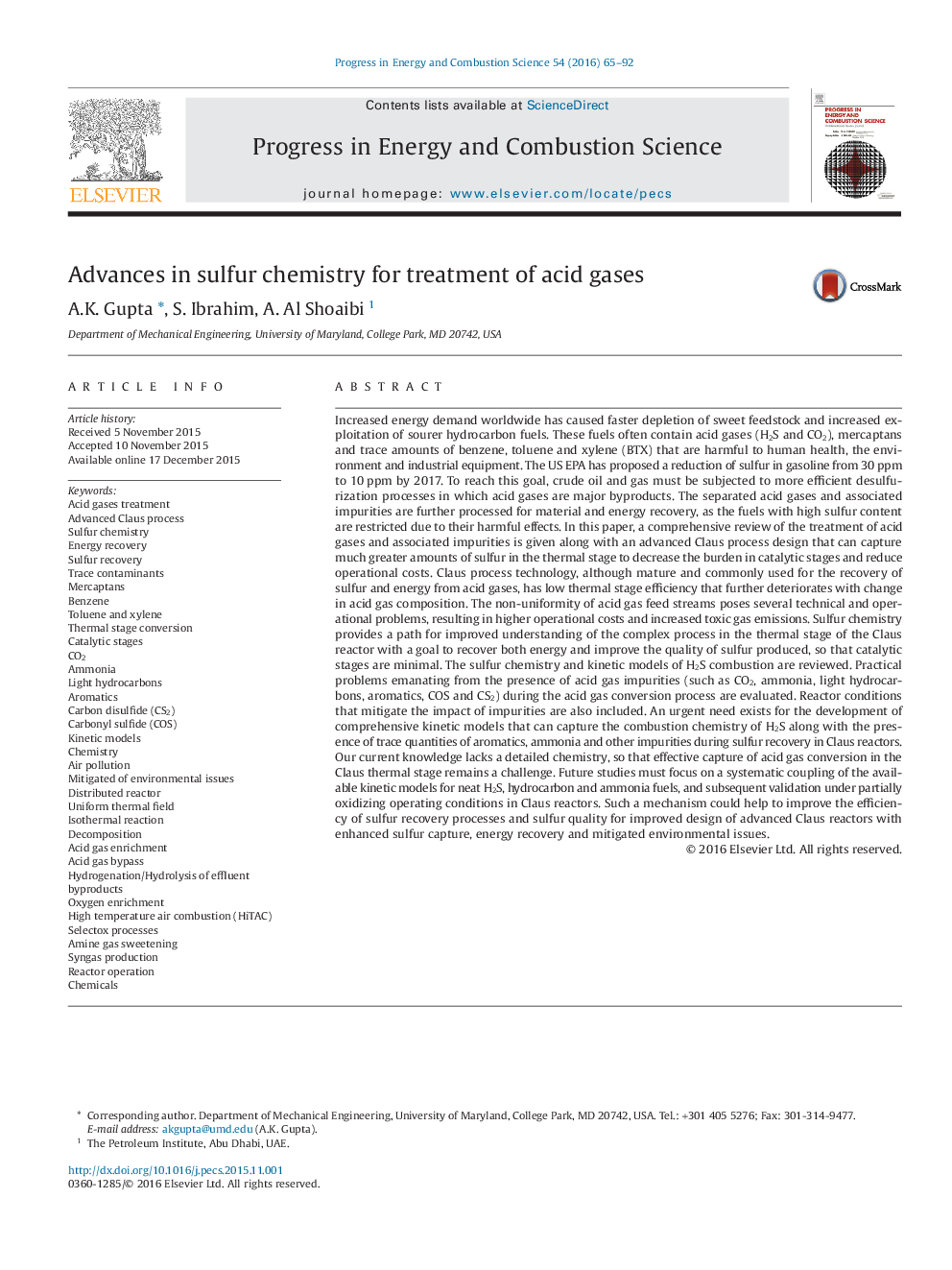| کد مقاله | کد نشریه | سال انتشار | مقاله انگلیسی | نسخه تمام متن |
|---|---|---|---|---|
| 241616 | 466290 | 2016 | 28 صفحه PDF | دانلود رایگان |
Increased energy demand worldwide has caused faster depletion of sweet feedstock and increased exploitation of sourer hydrocarbon fuels. These fuels often contain acid gases (H2S and CO2), mercaptans and trace amounts of benzene, toluene and xylene (BTX) that are harmful to human health, the environment and industrial equipment. The US EPA has proposed a reduction of sulfur in gasoline from 30 ppm to 10 ppm by 2017. To reach this goal, crude oil and gas must be subjected to more efficient desulfurization processes in which acid gases are major byproducts. The separated acid gases and associated impurities are further processed for material and energy recovery, as the fuels with high sulfur content are restricted due to their harmful effects. In this paper, a comprehensive review of the treatment of acid gases and associated impurities is given along with an advanced Claus process design that can capture much greater amounts of sulfur in the thermal stage to decrease the burden in catalytic stages and reduce operational costs. Claus process technology, although mature and commonly used for the recovery of sulfur and energy from acid gases, has low thermal stage efficiency that further deteriorates with change in acid gas composition. The non-uniformity of acid gas feed streams poses several technical and operational problems, resulting in higher operational costs and increased toxic gas emissions. Sulfur chemistry provides a path for improved understanding of the complex process in the thermal stage of the Claus reactor with a goal to recover both energy and improve the quality of sulfur produced, so that catalytic stages are minimal. The sulfur chemistry and kinetic models of H2S combustion are reviewed. Practical problems emanating from the presence of acid gas impurities (such as CO2, ammonia, light hydrocarbons, aromatics, COS and CS2) during the acid gas conversion process are evaluated. Reactor conditions that mitigate the impact of impurities are also included. An urgent need exists for the development of comprehensive kinetic models that can capture the combustion chemistry of H2S along with the presence of trace quantities of aromatics, ammonia and other impurities during sulfur recovery in Claus reactors. Our current knowledge lacks a detailed chemistry, so that effective capture of acid gas conversion in the Claus thermal stage remains a challenge. Future studies must focus on a systematic coupling of the available kinetic models for neat H2S, hydrocarbon and ammonia fuels, and subsequent validation under partially oxidizing operating conditions in Claus reactors. Such a mechanism could help to improve the efficiency of sulfur recovery processes and sulfur quality for improved design of advanced Claus reactors with enhanced sulfur capture, energy recovery and mitigated environmental issues.
Journal: Progress in Energy and Combustion Science - Volume 54, May 2016, Pages 65–92
